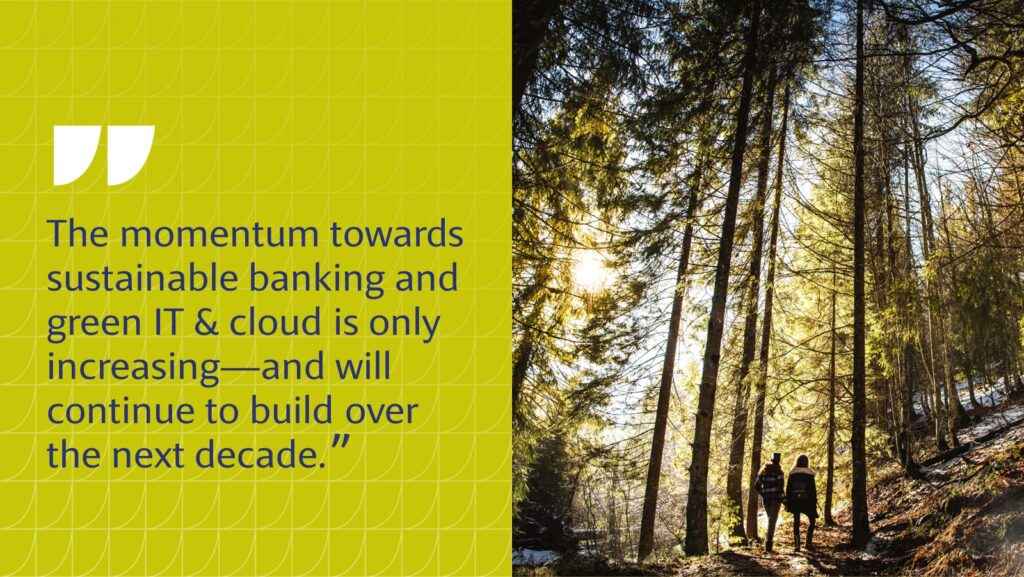
Banks need to act now to reduce their carbon footprint
By moving to the cloud, they will see an immediate and significant reduction in their carbon footprint.

Banks need to act now. Their customers, investors and employees now expect it. By moving to the cloud they will see an immediate and significant reduction in their carbon footprint.
COVID-19 has shown the cloud’s ability to benefit society and the environment.
Green and ethical investing, carbon offsetting, or moving to renewable energy sources— cannot alone deliver a bank’s own sustainability or net zero targets, nor meet customers’ expectations. Moreover, banks are increasingly turning to AI and Machine Learning to run applications and power services that can give them a competitive edge; workloads that are data and energy intensive.
As more workloads move to public cloud infrastructure, the need for banks to maintain their own private data centers diminishes. That means less hardware and floor space, less IT staff leaving behind their own carbon footprints, and less electricity to run it all. Using the public cloud hyperscalers also means green economies of scale; and data centers that are increasingly built with energy efficiency as a priority, be it lighting, cooling, computer consumption or equipment degeneration.
Becoming operationally efficient and sustainable by moving to the cloud, is delivering value by reducing carbon emissions and operations costs. Green Cloud is how banks can tip the balance in their favour. Those that go deeper, faster won’t only win friends, but market share too. The momentum towards sustainable banking and green IT & cloud is only increasing—and will continue to build over the next decade.
Banks that visualize and execute their sustainability agendas now will have first-mover advantage in the race to meet—and even exceed—their sustainability goals. It’s time to get to work. The solution is to use technology more sustainably, and to use technology as a vehicle for being more sustainable.
Background information:
The problem:
- Every year the banking sector produces around 6.5 billion cards worldwide, churning out 136,500 metric tons of carbon dioxide in the process – the equivalent of flying from New York to Sydney over 80,000 times.
- Greenhouse gas emissions associated with the sector’s investing, lending and underwriting activities are more than 700 times higher than its direct emissions.
- The banking sustainability imperative takes on new urgency. Banks are feeling the pressure from all sides: general public, regulators, employees, clients and investors, with each group motivated by slightly different interests.
- Banks can no longer afford to keep their heads down and hope that nobody notices, according to Temenos, the global banking technology company
The solution: ‘Cloudify to Greenify’
- Part of the solution is for banks to move to the cloud: Not “if” but “how”
- Banks will be familiar with cloud’s benefits over traditional on-premise infrastructure: security, system resilience, scalability, innovation and cost-optimization can all be enhanced.
- Research survey commissioned by Microsoft, one of the largest public cloud providers, estimates that businesses using their infrastructure are 93 percent more energy-efficient and can result in 98% lower carbon emissions than operating their own data center.
- How banks get their cloud services matters. Not all public cloud infrastructure or SaaS providers prioritize environmental concerns to the same extent. And those that do may not be able to back up their green credentials with the world-class productivity and security standards that banks cannot compromise.
First published in Fintech Finance: https://ffnews.com/newsarticle/banks-need-to-act-now-to-reduce-their-carbon-footprint-urges-temenos/